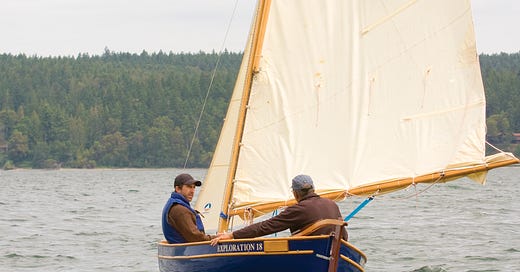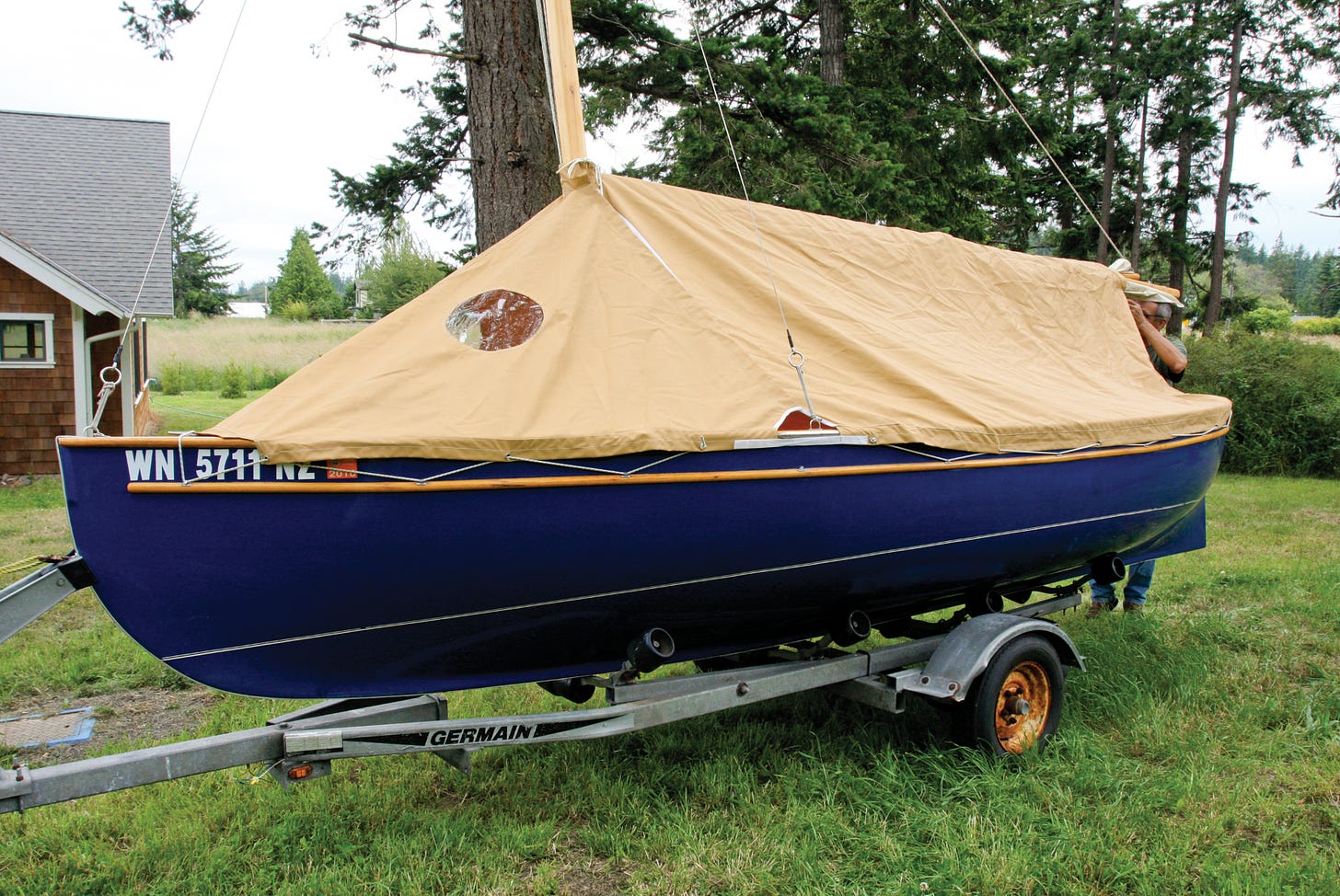Boat Review: Exploration 18
Here’s a well-built camp-cruiser that combines old world charm and surprising performance.
Build a commercial product really well, the way you’d like it built for yourself, and you’ll probably find few people willing to pay what it’s worth. There’s usually someone offering a “similar” product for less—although minus the quality touches.
This is precisely the dilemma the folks at Ligne D’ Eau and Quebec-based Naval Architect Jean Grenier faced when trying to market their Exploration 18 sailboats, and the primary reason only eight were ever produced. The E18 looks less like a factory production sailboat and more like an extravagant one-off.
With her mahogany thwarts, trunk and gunnels, and her glossy spars, there’s about as much wood on the E18 as you can put on a vessel and still call it fiberglass.
As for the general inspiration for the design, the E18’s aesthetics appear almost entirely handed-down from an earlier era. “I love traditional boats” says Grenier. “She’s based largely on an old British pilot boat I came across during my studies abroad (Lowestoft Nautical College). The boat was at the National Maritime Museum in Greenwich. Eventually I found lines for her in Roger Taylor’s book Good Boats.”
Grenier wanted a simpler trailersailer so he eliminated the pilot boat’s second mast and designed in a centerboard.
“The E18 is a blend. There are details from whaleboats as well,” he says. “I also leaned heavily on Skene’s Elements of Yacht Design.”
Grenier, who eventually settled on a gunter rig with generous sail area, says he ended up designing the sail plan three times. “I wanted to get it just right. I admire traditional boats, but I also like performance.”
We questioned Grenier about all that sail area (172 sq ft) and whether, given the boat’s putative purpose of cruising and exploration, he’d been tempted to draw her with a more conservative suit.
“Not really,” he says, “I wasn’t trying to design a race boat at all, but I’d seen where the boats of old carried a lot of sail area—they just had plenty of reef points.” It’s an admirable position, really, and one we’d like to see more production builders take: Give the sailor abundant sail for light air and trust him to reef judiciously.
Grenier built the plug for the E18 in 1995, found a sea kayak builder to lay up the fiberglass hulls, and hit the boat show circuit shortly after. Following an initial flurry of interest where he ordered three hulls at a time, the market slowed dramatically around 2000. The most recent boats were a little less labor intensive with more fiberglass (the foredeck and aft thwart), but eventually Grenier ceased production and hired on building ships. “The boat building business is definitely not for the nervous,” he says, echoing something we’ve heard often over the years.
Much to our surprise, Grenier told us he still has the molds and the necessary infrastructure to produce the boat, and would consider building them again if there was interest. He estimates the boat’s current retail price at approximately $20,000 U.S.
We were fortunate to meet E18 owner and experienced sailor Dwight Nicholson, who took us out for a review sail on a breezy Sequim Bay along Washington’s Olympic Peninsula.
PERFORMANCE
“Sails at hull speed very easily and consistently.” Matt Tyler, former owner 1997 model.
Keep reading with a 7-day free trial
Subscribe to Small Craft Advisor to keep reading this post and get 7 days of free access to the full post archives.





